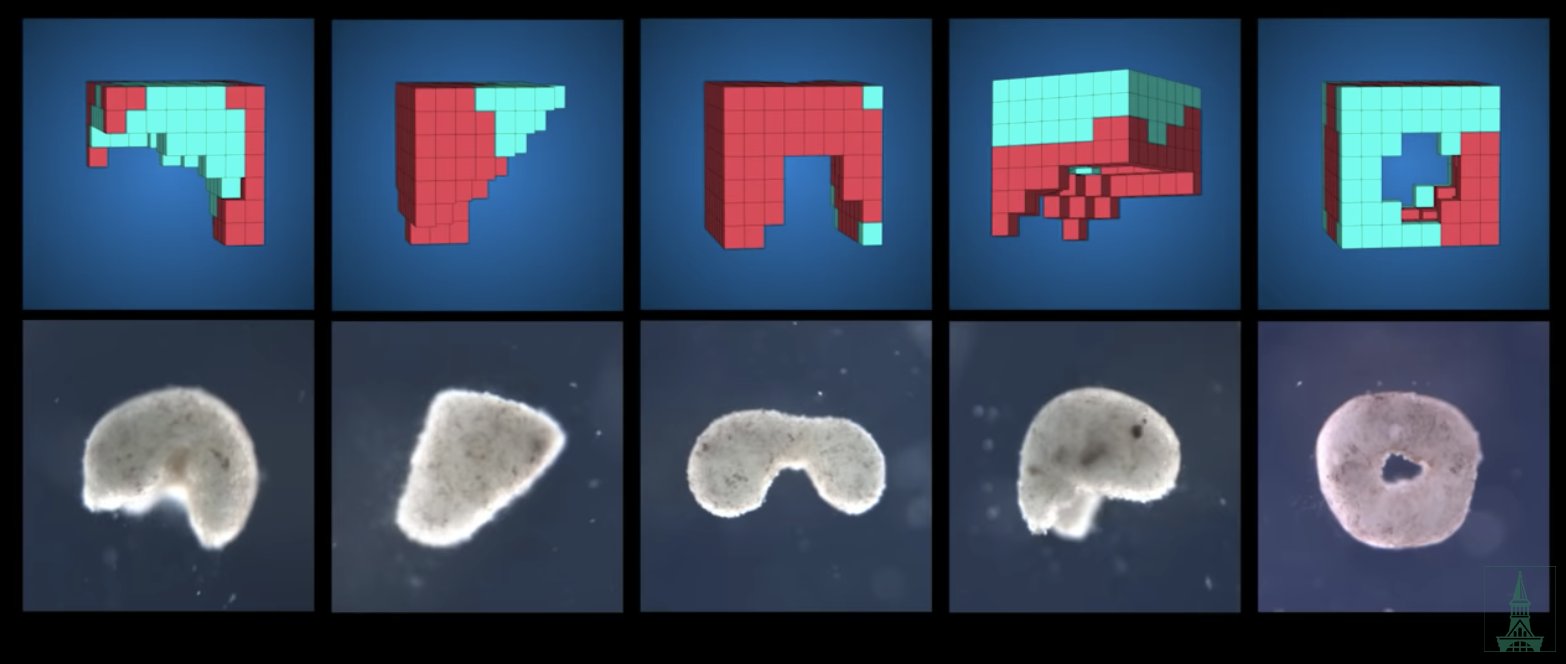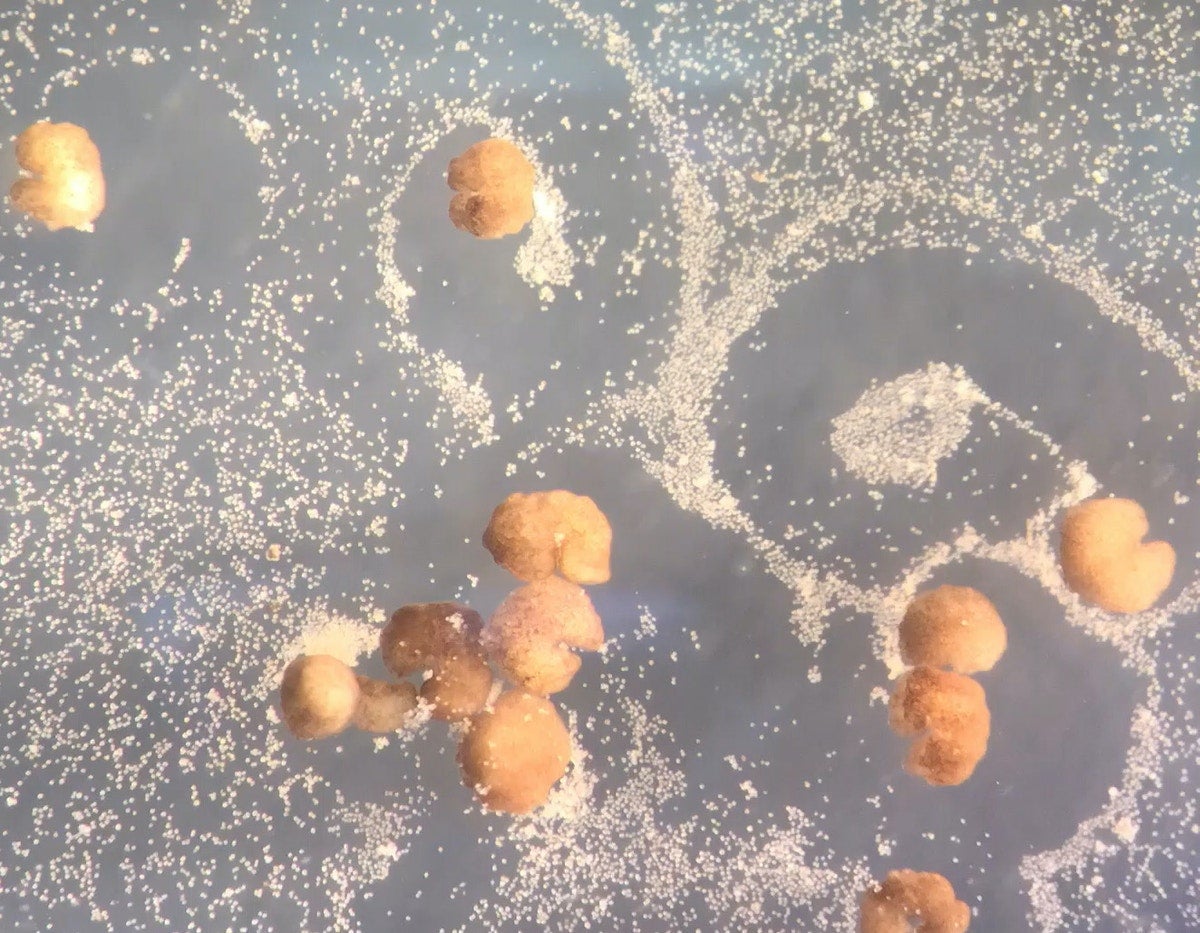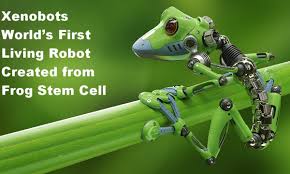In these posts I have spoken several times about advances in Robotics, see posts of 23 February 2019 and 23 November 2019. I have also recently posted about the research underway to develop a totally artificial form of life similar to that which may have been Earth’s first living creature billions of years ago, see post of 25 September 2021. In this post I’m going to discuss research that has been conducted over the last few years to develop ‘living robots’ called Xenobots, research that has found an entirely new method of reproduction, one that is different from that of any known natural life form.

Xenobots are the creation of a group of biologists at the Allen Discovery Center at Tufts University and Harvard’s Wyss Institute for Biologically Inspired Engineering who teamed with computer and robotics experts at the University of Vermont. Built from the embryonic stem cells of the frog species Xenopus laevis, Xenobots consist of an outer wrapping of skin cells to maintain shape and provide protection with heart muscle cells inside to provide movement. The first Xenobots were announced early in 2020 and had been programmed to perform simple tasks like walk or swim, push objects or carry payloads. The scientists hope to someday fabricate Xenobots that can perform useful functions like gathering up plastic microparticles from the ocean or perhaps be inserted into our bloodstream in order to deliver antibiotics directly to the site of an infection.

The Xenobots are designed by a computer algorithm that specifies the placement of both the skin cells and muscle cells in order to carry out the desired function. The actual Xenobot is then assembled biologically from several hundred of the frog cells. The manufactured Xenobots can then survive for several weeks without food and have even been observed to heal themselves after an injury.

Now a new ‘species’ of Xenobot, one that looks superficially like the gobbling ‘Pac Man’ character, has been manufactured. This new Xenobot has been designed and assembled in order to gather up several hundred individual frog stem cells and assemble them inside its ‘mouth’. These ‘baby’ Xenobots will, within a few days both resemble and function like its ‘Parent’ Xenobot’. These second generation Xenobots can then go out and repeat the process, gathering up single cells to form grandchild Xenobots.

This method of reproducing is entirely new, no living creature ‘builds’ its young in this fashion. Single cell organisms split into mother and daughter cell, Multi-cellular creatures either bud asexually or produce offspring by some form of sexual union while viruses reproduce by hijacking a cell’s metabolism and using it to build copies of itself. No known creature in nature gathers up individual cells and assembles then into a copy of itself. According to Joshua Bongard, co-leader of the research at the University of Vermont and a robotics expert, “With the right design…they (the Xenobots) will spontaneously self-replicate.”

Some colleagues of the researchers are not quite so impressed however. They point out that individual frog stem cells will come together and segregate all by themselves without needing a Xenobot to gather them. And the ‘Pac Man’ shaped mouth of the Xenobot actually has to be made surgically by hand in the Xenobots. Perhaps most importantly the ‘baby’ Xenobots produced are smaller than their ‘parents’ because of which the whole process terminates after at most three or four ‘generations’. These facts may make the claims of ‘an entirely new form of reproduction’ seem like a bit too much hype, but even the critics agree that the research being carried out is very interesting. Living organisms are being designed and built to specifications in order to perform desired tasks.

Remember that is the goal here, to develop living machines that can help to eliminate plastic microparticles from the oceans, or to swim in our bloodstreams in order to deliver antibiotics directly to an infection. In many ways scientists are now blurring the lines between machine and living creature. Whether it be Artificial Intelligences that can think or Xenobots that can reproduce in the future the choice of mechanical or organic ‘robot’ could depend on the job you need them to do.
